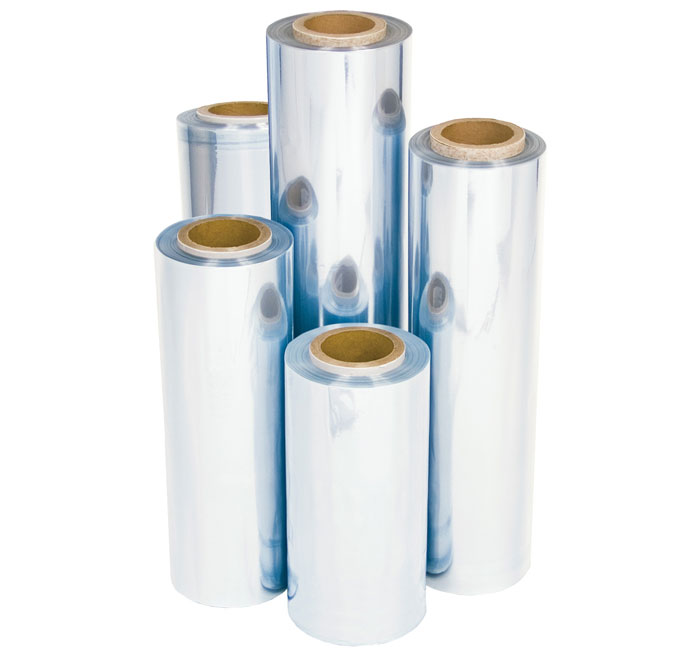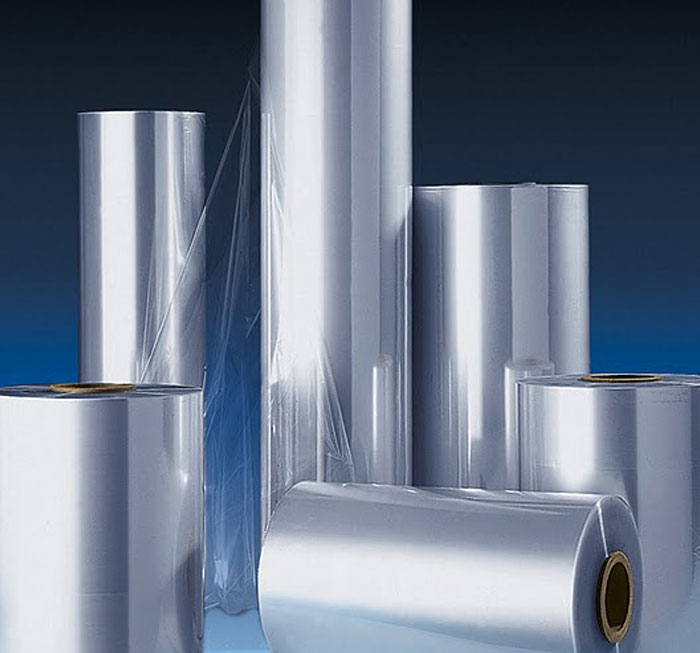If you are looking for shrink film materials to keep your product safe and secure, you probably already know there are many types of shrink film on the market. Finding the right shrink film will enhance the packaging experience but also ensures your product will remain protected while on the shelf and during shipping.
There are three main types of shrink film on the market: Polyvinyl Chloride (PVC), Polyolefin (POF), and Polyethylene (PE). Even though these different films can be interchangeable, each film has different characteristics which make them more suitable for special applications or products.
If you aren’t sure which shrink film to use for your application, here are the main pros and cons of each type of film and the best applications for each:
Polyvinyl Chloride (PVC)
Pros:
- Lightweight, thin, and pliable
- More affordable than the other shrink films
- Pleasing aesthetic appearance—crystal clear, shiny, and crisp
- High resistance to tears and punctures
Cons:
- Compromised strength in a wide range of storage temperatures—film wrinkles and softens with too high temperatures and becomes brittle and hard with too cool temperatures
- Only useful for inedible products due to the presence of chloride in the film
- Not suitable for multiple product bundling
- Health hazards due to the emission of harmful and toxic odors during heating and sealing—Use only in well-ventilated areas!
- Requires strict standards for disposal
Polyolefin (POF)
Pros:
- Exceptional clarity and glossy packaging surface
- High durability and versatility, especially with irregular packaging forms
- Less odors during the heating and sealing process
- Can handle wide temperature fluctuations during storage which reduces the risk of material loss
- Used for both edible and non-edible products; FDA approved for food contact
- Offers high puncture resistance and exceptional seal strength
- Performs well in a variety of machines and sealers
- Made of 100% recyclable materials
- Ability to shrink quickly and completely
- Excellent for bundling multiple items together
- Cross-linked POF is great for high-speed applications, providing added strength without compromising clarity and prevents build-up on sealing components
Cons:
- More expensive than PVC shrink film
- May need to add perforations to this film with some applications to prevent air pockets and bumpy surfaces (but pre-perforated POF is now available)
Polyethylene (PE)
Polyethylene is a type of polyolefin which is a single monomer wrap formed with the addition of ethylene during polymerization. Manufacturers use PE in several forms of flexible protective packaging including stretch wrap and shrink wrap, performing differently for each.
PE takes multiple forms: Low-Density Polyethylene (LDPE), Linear Low-Density Polyethylene (LLDPE), and High-Density Polyethylene (HDPE). Each have different industrial applications, but LDPE is most used commonly for shrink packaging.
Benefits of using LDPE over the other forms of shrink packaging include added strength and durability for heavy, large items like multi-packs of beverages for example. Companies often print these wraps with graphics while still maintaining image and strength required.
POF and PVC shrink wrap is limited in gauge thickness, normally up to 100 gauge, however, PE can upscale to much higher gauges of up to 1200 gauge. Marine industrial companies will apply heavy gauge thickness in application such as wrapping a boat for storage. Disadvantages of PE for shrink wrap are that it doesn’t have a high shrink rate which is usually around 20% plus it has lower clarity than other wraps.
Fast Facts About PE Shrink/Stretch Wrap
- LDPE (Low Density Polyethylene): Low melting point, good stretch & strength, commonly used for foods and meat products and stretch wrapping/palletizing
- LLDPE (Linear Low-Density Polyethylene): Thinner than LDPE, just as strong, decent clarity, used for bulk foods, frozen foods, prints, grocery, trash bags, palletizing/stretch wrapping
- HDPE (High Density Polyethylene): One of the most common polymers in plastics packaging, USDA/FDA-approved for food contact, lightweight, durable, water-resistant, bad O2-resistance, good for certain foods, retail products, clothing, stretch wrap for pallets
- Good for lower end applications and unitization (24-pack of waters for example), replacement of master corrugated shippers, larger items
- More expensive, but durable
- Polyethylene shrink wraps are recyclable
- Thicker, offering more stretch ability
- Shrinks as it cools rather than heats, requiring additional cooling space at the end of a shrink tunnel
- Applications include large heavy items including bundling multi-packs of water
- In thicker gauges and larger applications, wrapping boats for storage
Conclusion
No matter what your application, knowing what your options are can save you time and money in the long run. Try to always connect with a supplier that will answer any questions to which you don’t have clear answers. Often, they can also help you with whatever custom packaging solutions will match your needs whether it be protection, visual presentation, efficiency, or more than one of these. Once you know all the information and learn the knowledge you need, you’ll be able to make the best choice for your business.
Need help with shrink film for your product? Let one of our experts help you. Utah Packaging has been supplying shrink film for over 34 years. Call or email one of our packaging specialists to get your project going, or go to our website at packagingutah.com and request a quote today.
https://www.industrialpackaging.com/blog/pvc-polyethylene-polyolefin-the-differences



